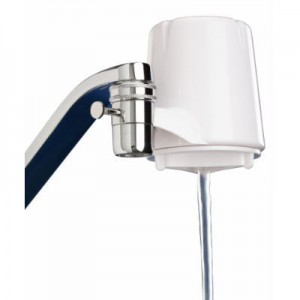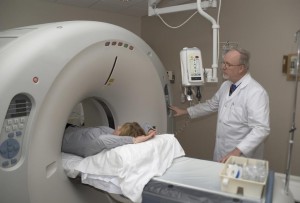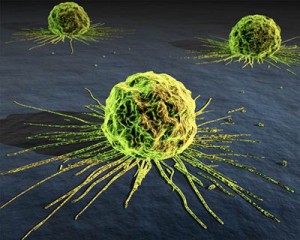President’s Cancer Panel Report
Filed under: General Health
To continue in the same vein as my previous post, I want to discuss another piece I learned about during my rotation at the Cancer Center. My preceptor had a paper tacked up on her wall about the 2010 President’s Cancer Panel report that I thought was very interesting.
The President’s Cancer Panel was created by Congress in 1971 and it’s purpose is to monitor the National Cancer Progam and report directly to the President every year. This panel is made up of two members - Dr. LaSalle D. Lefall, Jr., a professor of surgery at Howard University and Margaret Kripke, a professor at University of Texas’ M.D. Anderson Cancer Center – they were appointed by President Bush to three-year terms.
The two members of the panel met with nearly 50 medical experts in late 2008 and early 2009 before writing their report to the president.
This 240 page report declared that “The true burden of environmentally induced cancers has been grossly underestimated.” The report urged President Obama “to use the power of your office to remove the carcinogens and other toxins from our food, water, and air that needlessly increase health care costs, cripple our nation’s productivity, and devastate American lives.” That is some pretty strong language right there, and I like it!
While the report acknowledges that environmental causes of cancer are nothing new, “this group of carcinogens has not been addressed adequately by the National Cancer Program. The American people – even before they are born – are bombarded continually with myriad combinations of these dangerous exposures.”
Most cancer epidemiologists have long maintained that tobacco use, diet and other factors are responsible for most cancers, and that chemicals and pollutants cause only a small portion — perhaps 5 percent. This reports begs to differ. The panel called those estimates “woefully out of date.” The panel criticized regulators for using those low estimates to set environmental regulations and blasted the chemical industry for using them “to justify its claims that specific products pose little or no cancer risk.”
“It is not known exactly what percentage of all cancers either are initiated or promoted by an environmental trigger,” the panel said in its report. “Some exposures to an environmental hazard occur as a single acute episode, but most often, individual or multiple harmful exposures take place over a period of weeks, months, years, or a lifetime.”
According to the report federal chemical laws are weak, funding for research and enforcement is inadequate, and regulatory responsibilities are split among too many agencies. There are about 80,000 chemicals in commercial use in the United States, but federal regulators have assessed only about 2% of those for carcinogenicity.
The report states that not only do chemicals act individually, but many chemicals interact with each other, intensifying the effect, and some people have a genetic makeup or early life exposure that makes them susceptible to environmental contaminants. These chemicals and contaminants might trigger cancer by a variety of means – they can damage DNA, disrupt hormones, cause inflammation, or turn genes on or off.The report singles out bisphenol A (BPA), radon, formaldehyde and benzene. BPA is something I have talked about before and is a chemical to stay away from. It is used in polycarbonate plastic and can linings and is mostly unregulated in the US (though this is changing). Beyond BPA other chemicals in plastic also function as estrogen mimetics, so it is in your best interests to decrease your plastic use. Fortunately for you I laid out a plan on How to Use Less Plastic.
As for radon, about 1 in 20 homes have elevated levels of radon, and up to 20,000 lung cancer deaths are associated with radon exposure each year. Radon can be decreased in your water supply by filtering your drinking water, though you should also get your air levels checked.

Formaldehyde is in pressed wood, so things like cabinets and furniture might be problems. Benzene is in synthetic fibers, plastics and detergents. Fortunately enough I wrote about ways to decrease your exposure to such carcinogens in Dangers and Solutions of Indoor Air Pollution.
Lefall and Kripke concluded that action is necessary to reduce exposures, even though in many cases there is scientific uncertainty about whether certain chemicals cause cancer. That philosophy, called the precautionary principle, is highly controversial among scientists, regulators and industry.
“The increasing number of known or suspected environmental carcinogens compels us to action, even though we may currently lack irrefutable proof of harm,” Lefall, who is chair of the panel, said in a statement.
The panel also urged doctors to be more judicious in ordering CT scans and other imaging tests, as they expose patients to large amounts of radiation. In facts patients who have a chest CT scan receive a dose of radiation in the same range as survivors of the Hiroshima atomic bomb attacks who were less than half a mile from ground zero, according to the report.

The report states that our current system must be overhauled, as it places the burden on the government to prove that a chemical is unsafe before it can removed from the market, rather than it’s safty being proved before being allowed on the market! The standards are so high, the government has been unable to ban chemicals such as asbestos, a widely recognized carcinogen that is prohibited in many other countries.
While overall cancer rates and deaths have declined in the United States, about 41 percent of all Americans still will be diagnosed with cancer during their lifetime, and about 21 percent will die from it, according to the National Cancer Institute’s SEER Cancer Statistics Review. In 2009 alone, about 1.5 million new cases were diagnosed and over 500,000 people died from cancer in the US. This is clearly an area that the chemical industry and the FDA can no longer turn a blind eye towards, and I for one hope that a revolution is coming.
If interested here is the full President’s Cancer Panel Report.
I do want to be clear that there are many other risk factors you can modulate to improve your health and decrease your risk of cancer beyond minimizing chemical exposure – maintain a healthy bodyweight and bodyfat percentage, exercise regularly, eat plenty of fruits and vegetables, don’t smoke, and consume alchohol in moderation. That in conjunction with decreasing your exposure to known and potential carcinogens is your best defense.
Check out the BSP Training & Nutrition Newsletter!
You will get immediate access to:
- Weekly updates and exclusive content.
- The 20-page report "The Truth About Saturated Fat & Cholesterol."
- Become more awesome!
Posted on November 30th, 2011 by Brian St. Pierre
6 Comments





December 5th, 2011 at 2:30 pm
Thanks for this informative post.
It’s nice to see that the people in charge of this report are actually blowing the whistle.
It seems that all too often the people/groups who are supposed to look after the health of the public are actually being paid/funded by industry players whose own agendas fly in the face of health!
On the topic of exposure to harmful chemicals/substances etc, – have you ever written on prenatal nutrition for those who are looking to have children? Also, what to do to minimize exposure to harmful substances while pregnant? Perhaps some general guidelines for healthy eating during pregnancy? I think that would be an interesting topic.
December 5th, 2011 at 4:31 pm
[...] in the same vein that of my previous two posts (My Family Health Portrait and President’s Cancer Panel Report) is another interesting tidbit I learned in my outpatient rotation at the Cancer Center – The [...]
December 7th, 2011 at 9:28 pm
[...] The President’s Cancer Panel Report – I thought Brian St. Pierre did a great job of presenting this valuable information very succinctly; it’s all stuff that we should know. [...]
December 9th, 2011 at 8:26 pm
I’m just wondering Brian if you think that this (plastic) for instance is really a matter of dosage more than anything else (not unlike nutrition or exercise even…). There is for instance trace amounts of benzene in apples, but we don’t demonize them?
Think we’ll ever discover a threshold or upper limit to many of these problems in your lifetime?
December 12th, 2011 at 3:10 pm
Mitch,
I agree it is a nice breath of fresh air for sure. I have never really written on that topic, but it is definitely something that I looked into and will write about in the future. Thanks for the idea!
Darren,
I definitely think the poison is in the dose. If you drink from a plasic cup everyone once in a while I think you will be just fine. However if you slug 64oz of water from your 4-year-old nalgene everyday that might not be so great. Especially if you also use a plastic coffee mug, plastic tupperware and on and on. I don’t know if we will have proven safe levels for a lot of these compounds for a long time.
In general though if there are easy ways to decrease your exposure, why not do it? It certainly isn’t going to hurt, and more than likely will help.
Brian
August 10th, 2016 at 5:19 am
Some really interesting information, well written and broadly speaking user genial.